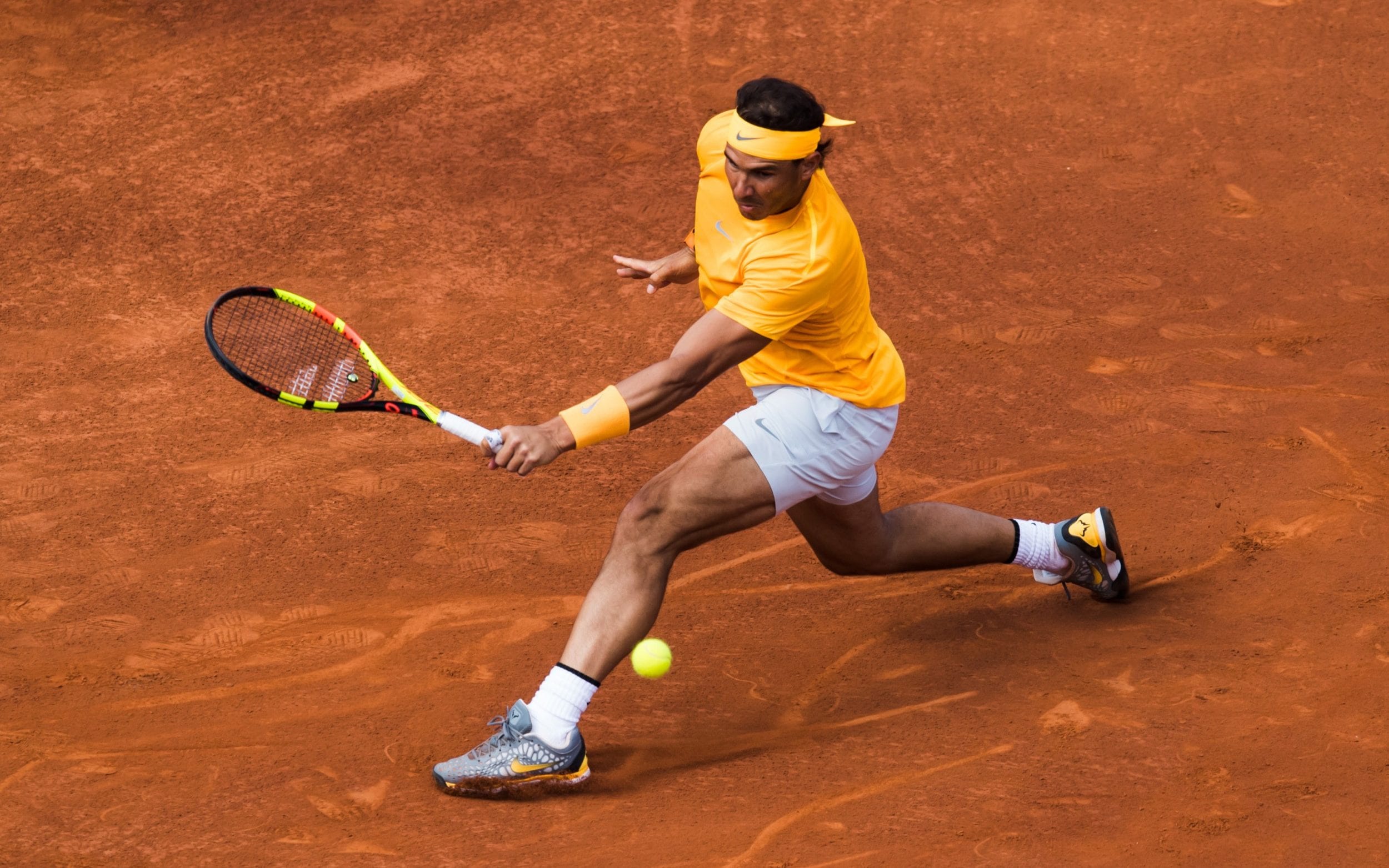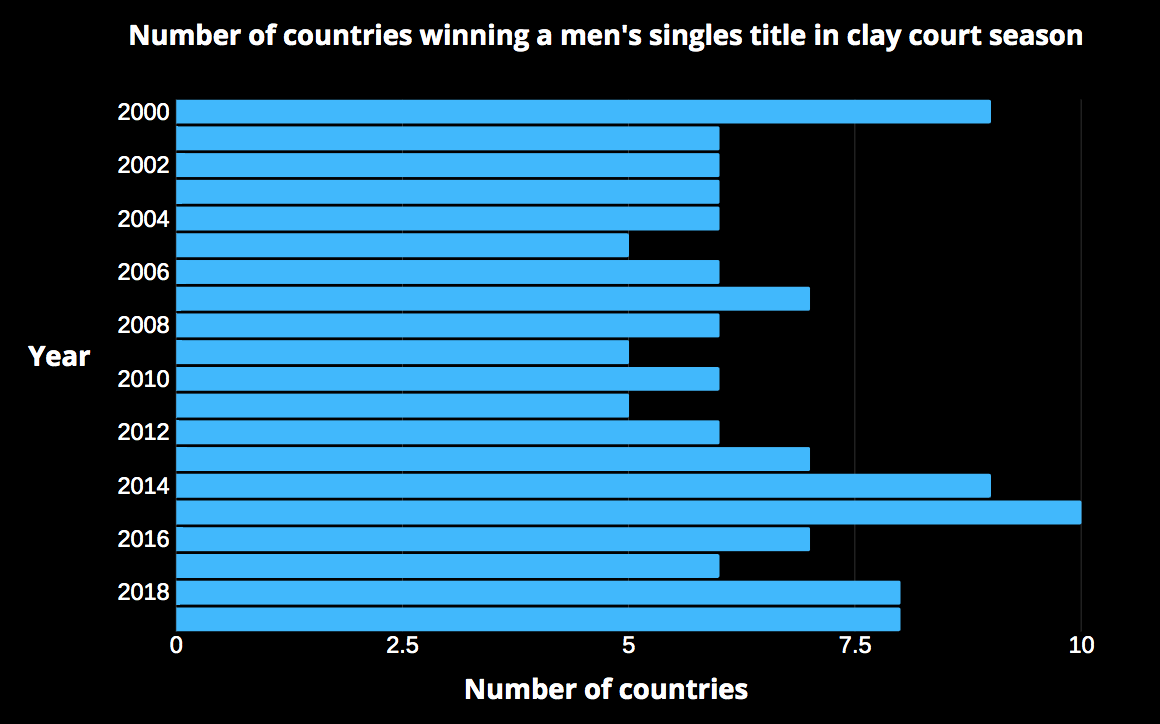
April 18, 2020
The 1990s in men’s tennis was a decade to savour. Not just because it was the period of play dominated by Pete Sampras, but because it was the decade full of contrasts and diversity. I am not talking about the apparel either. The court surfaces across different parts of the season enabled different types of players succeed and win titles.
A combination of fast courts, mid pace courts and slow courts proved to be the perfect place for specialist players to thrive. And nowhere more did a specialist thrive than on the red clay. Attacking players would often struggle on the surface to have sustained success, while baseliners would easily adapt to the slow surface and heavier conditions.
But since the 2000s, with tennis becoming a more global sport than ever and surfaces becoming more similar in their style, the plethora of surface specialists has dwindled and there has been a rise in “all-rounders” in tennis. To win titles on clay, simply being a specialist may no longer get the job done. Power and consistency from the baseline is still crucial, but other styles are also proving to be successful.
So how has clay court tennis evolved in this century? There used to be the perception that South American nations, who have produced champions like Gustavo Kuerten, and countries like Spain and France would dominate for a long time on the surface. Does that still hold true? And what are some of the changes in the surface of key tournaments during the clay court season? I had a look at some of the data from the start of the century to see if I could answer these questions.
For this analysis, I looked at men’s tennis from the year 2000 till 2019 and in particular the clay court season from April till June. There are other clay court singles tournaments played at other times of the year in various parts of the world, but I have specifically looked at this two month period because that is when most players are playing on the surface. It would give the best indication of how the style of play has changed on clay, and what are some of the trends and patterns that can be noticed.
The first thing to notice is that there have been subtle changes in the number of singles tournaments played on clay between April and June on the men’s tour. In the year 2000, there were 12 singles tournaments played on clay during that two month period. In 2005, the number of clay court tournaments that took place for singles players dropped down to 10. It rose back up to 11 for the next six years and even got up to 13 tournaments between the years 2015 and 2018. It was back to 12 singles tournaments last year and was likely to be 12 again this year before the tour’s suspension due to the coronavirus pandemic. So the number of opportunities to win tournaments has stayed similar, whereas other surfaces like hard courts have seen more fluctuations.
When looking at the countries which have been most successful during this part of the season on the men’s circuit, there is an obvious elephant in the room. Rafael Nadal’s ridiculous success on the surface from 2005 has ensured that in most years, Spain have been the most successful nation on the surface. But even without Nadal’s titles, Spain have had some outstanding clay court players in the last 20 years. The likes of Nicolas Almagro, former world number one Juan Carlos Ferrero, Carlos Moya and David Ferrer have all won titles on the surface over the years. But Spain is not the only country with dominance on clay.
Between the years 2001 and 2013, the maximum number of countries to have a men’s singles title winner in a single season was seven. Many years during this period, it oscillated between five and six countries having clay court title winners between April and June. But then for the next two years, the clay court season saw nine and 10 countries respectively boast men’s singles title winners. Countries like Latvia with Ernests Gulbis and Austria’s Dominic Thiem were able to win titles in those two years and in this century, there are 28 countries with men’s singles title winners during the clay court season. Greece is the latest country to boast a winner in the form of 21-year-old Stefanos Tsitsipas.

So there is now a more diverse range of winners of clay court tournaments on the men’s tour, but other than the game becoming more global, what reason can we point to for this change? Perhaps the biggest change is the change in surface and conditions on which clay court tennis is played. Other surfaces such as grass and hard courts have become slower over the years, not to the extent of clay courts, but it is no longer as drastic a difference as it used to be in the past.
When looking at the ace-based surface rating from Tennis Abstract, where the higher the number correlates to a faster surface, the Australian Open is the only major which has seen an increase in rating in the last six years. In 2014, Wimbledon had a rating of 1.35 which made it the fastest Grand Slam surface of the four that year. But last year, the rating dropped to 0.99, while the US Open dropped from 1.1 to 0.97 in the same time period. This allows players to develop an all-round game, and they can be more confident that the prevalent baseline-dominant game style can work on most surfaces.
Even in clay court tournaments, apart from the French Open at Roland Garros, there have been some changes to make it seem more like other tournaments around the world. Typically on clay, the ace rate for matches is the lowest of any surface because of its slowness and the difficulty in just powering past an opponent. At the three clay-court ATP Masters 1000s tournaments between 2012 and 2016, according to Tennis Abstract data, the ace rate percentage has seen higher values than normal. It is important to note that in 2012 in Madrid, because of the change to the blue clay surface, it played extremely quickly and that is why the ace rate was 8.11%. Unsurprisingly, an attacking player like Roger Federer was able to win the tournament that year, compared to more defensive players like Andy Murray or more recently, Alexander Zverev ending up victorious.
There have also been fewer return points won on average, and little fluctuation in the number of breaks of serve per match. A clay court match typically sees more breaks of serve and more return points won than on other surfaces, but with that difference continuously diminishing, it encourages players to develop an all court game. The age of the clay-court specialist is now long gone and may never return to men’s tennis again.
Even Nadal, who may have started out as a clay court specialist, turned himself into an all court specialist and that has in all likelihood helped his clay court game. He now no longer has the need to hit miraculous passing shots from way outside the doubles alley. As time has gone on, he became more dominant as highlighted by his 2017 victory at Roland Garros. That is why as we go into clay court tennis from next year, this decade may see even more of a diverse range of winners.